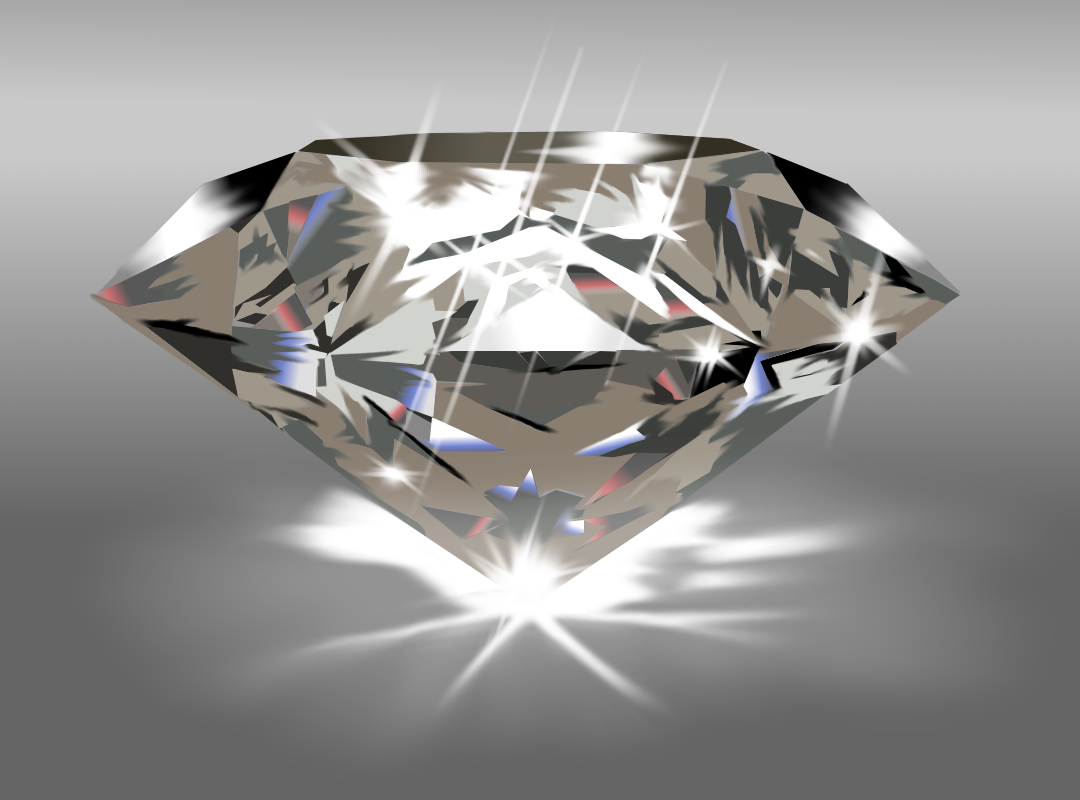Can a diamond last forever

Diamonds do not last forever. Diamonds degrade to graphite, because graphite is a lower-energy configuration under typical conditions. Diamond (the stuff in wedding rings) and graphite (the stuff in pencils) are both crystalline forms of pure carbon. The only difference is the way the carbon atoms are arranged and bonded in the crystalline lattice. In diamond, each carbon atom is bonded to four neighboring carbon atoms in a closely-packed three-dimensional grid. In graphite, each carbon atom is strongly bonded to three neighboring carbon atoms in a plane and the planes of atoms are loosely bonded to each other. The degradation of diamond to graphite is a simple case of the atoms internally rearranging and relaxing to a lower energy state. This process requires no chemical reaction with an external material. Although graphite is a more stable form of crystalline carbon than diamond under normal conditions, there is a significant kinetic energy barrier that the atoms must overcome in order to reach the lower energy state. Diamond is therefore a metastable state. As is always the case in chemistry, energy must be inputted to break chemical bonds and allow new bonds to form.
The situation is somewhat like standing at the bottom of a small hole. Next to your hole is an even deeper hole, but a wall separates you from the deeper hole. You don’t just fall into the deeper hole, because there is a wall in the way. But if you get enough energy to jump over the wall, you will fall into the deeper hole. The first hole is like the energy state of diamond and the deeper hole is the energy state of graphite. When you heat up diamond or bombard it with ions, the atoms gain enough energy to pop up over the energy barrier and reconfigure to graphite. Under normal conditions, the kinetic energy of the atoms is small compared to the energy barrier, so that the degradation of diamond to graphite is so slow as to be virtually non-existent. In other words, if you are only going to wear a diamond on your finger at temperatures comfortable to humans away from high ion sources, then the diamond will last millions to billions of years. On a human time-scale and for everyday human uses, the phrase “diamonds are forever” is a very good approximation to the reality.
At higher temperatures or under intense ion bombardment, the degradation of diamond to graphite becomes much faster. The degradation of diamond can have important practical implications. For instance, the hardness of diamond makes it a useful material from which to form cutting edges and grinding grit. But if the temperature gets too high when cutting or grinding, the diamond will degrade to graphite and flake off, especially in the presence of iron. Note that there is much higher pressure deep in the earth than at the surface. At high pressure, diamond is the most stable configuration of pure carbon and not graphite. For this reason diamond spontaneously forms and does not degrade to graphite deep underground. Also note that since diamond is made out of carbon, diamond can burn just like coal. Therefore, if enough oxygen is present, diamond at high temperature will combust to form carbon dioxide rather than transform into graphite.
Reference:https://wtamu.edu/~cbaird/sq/2013/12/17/why-do-diamonds-last-forever/


Leave an answer
You must login or register to add a new answer.